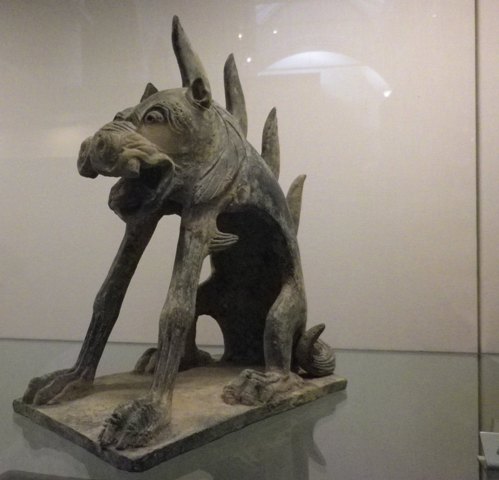A very long time ago, fishermen and small traders along the coast of the Red Sea built their small boats out of reeds. They used reeds because they had a lot of them. These boats would either take them out for fishing or would carry goods and/or passengers out to bigger boats anchored in deeper water.
At around the same time, fishermen and traders along the Malabar Coast of India built their small boats by hollowing out a great hunk of tree. This they could do because they had plenty of trees.
Some bright spark decided that these hollowed out logs looked remarkably like a trough so that’s what they called them. In the local lingo, this was ‘hūrī’.
One day, a trader in a big boat was delivering something to the Red Sea when he realised that reed boats were not as good as log boats. Perhaps he saw one sink after being involved in a collision. Or maybe they just leaked a lot. Whatever the reason, he remembered the hollowed out log boats of India and immediately saw a business opportunity.
On his next trip to India, the trader haggled a bit with the locals and managed to swap something valuable for a few of the log boats. He put them on his big boat and sailed back to the Red Sea.
Upon arrival, he gave a demonstration of his new toys and the locals went mad for them. They could immediately see the benefits and snapped up all of his stock. He rubbed his hands with glee.
When the Red Sea boatmen asked what they were called, he said “hūrī”. Given it wasn’t written down, the Red Sea boatman misheard it as ‘hori’. From that time, so long ago, the Red Sea dugout canoe has been called (by some) a hori.
Now, this might not seem like anything approaching a catastrophe, and, I guess, in the scheme of things it’s not but it caused me a few headaches today. Nick (at work) wanted to know what an Arab Hori was and set me loose.
The result of my researches was a five page essay (complete with bibliography) on the origins, distribution and changes to the dugout canoe in and around the Red Sea, west coast of India and the east coast of Africa. And I thoroughly enjoyed it.
Don’t worry, I’m not going to bore you with anything else from the essay but I just wanted to point out how capitalism can be a force for good. The trader saw the opportunity to make a quick buck and improved the lives of seller and purchaser in doing so. How can that be bad? Just think, if we didn’t have capitalism, people living on the coast of the Red Sea might still be baling out their reed boats.
¬¬¬¬¬¬¬¬¬¬¬¬¬¬¬¬¬¬¬¬¬¬¬¬¬¬¬¬¬¬¬¬¬¬¬¬¬
Following on from last week’s dip into cultural China…here’s some more things from the V&A.
A Chinese mythical creature, made somewhere between 450 & 520.
The ‘King’ Chair by Shao Fan. Made in 2005 by a Beijing based artist, this is a mix of old and new. It doesn’t look particularly comfortable.
¬¬¬¬¬¬¬¬¬¬¬¬¬¬¬¬¬¬¬¬¬¬¬¬¬¬¬¬¬¬¬¬¬¬¬¬¬
I was really surprised by the Nobel Peace Prize winner this year. Given that it is the International Day of the Girl Child and this year, the theme is about getting more girls into education all around the world, I rather thought the recipient would be Malala Yousufzai, the young girl who was shot by the Taliban. Given Malala has now dedicated her life to the education of girls in countries that don’t normally allow it, I figured she was a shoe-in. Still…what do I know.
You can read about the International Day of the Girl Child here.





Adam Smith referred to the way capitalism like some invisible hand effectively shaped society in a beneficial way – whether people had benevolent intentions or not.
That dog thing is scary. And the chair looks like a modern chair suddenly beamed into the middle of an old chair – like the sofa in dirk gently
I agree with Mirinda about chair and dog, and yes it is about time that women in every country had the chance of going to school to learn anything they want,good on Malala Yousufzae and I was surprised she didn’t get the Nobel Peace Prize, but the person who did was a Man!!.
love mum x